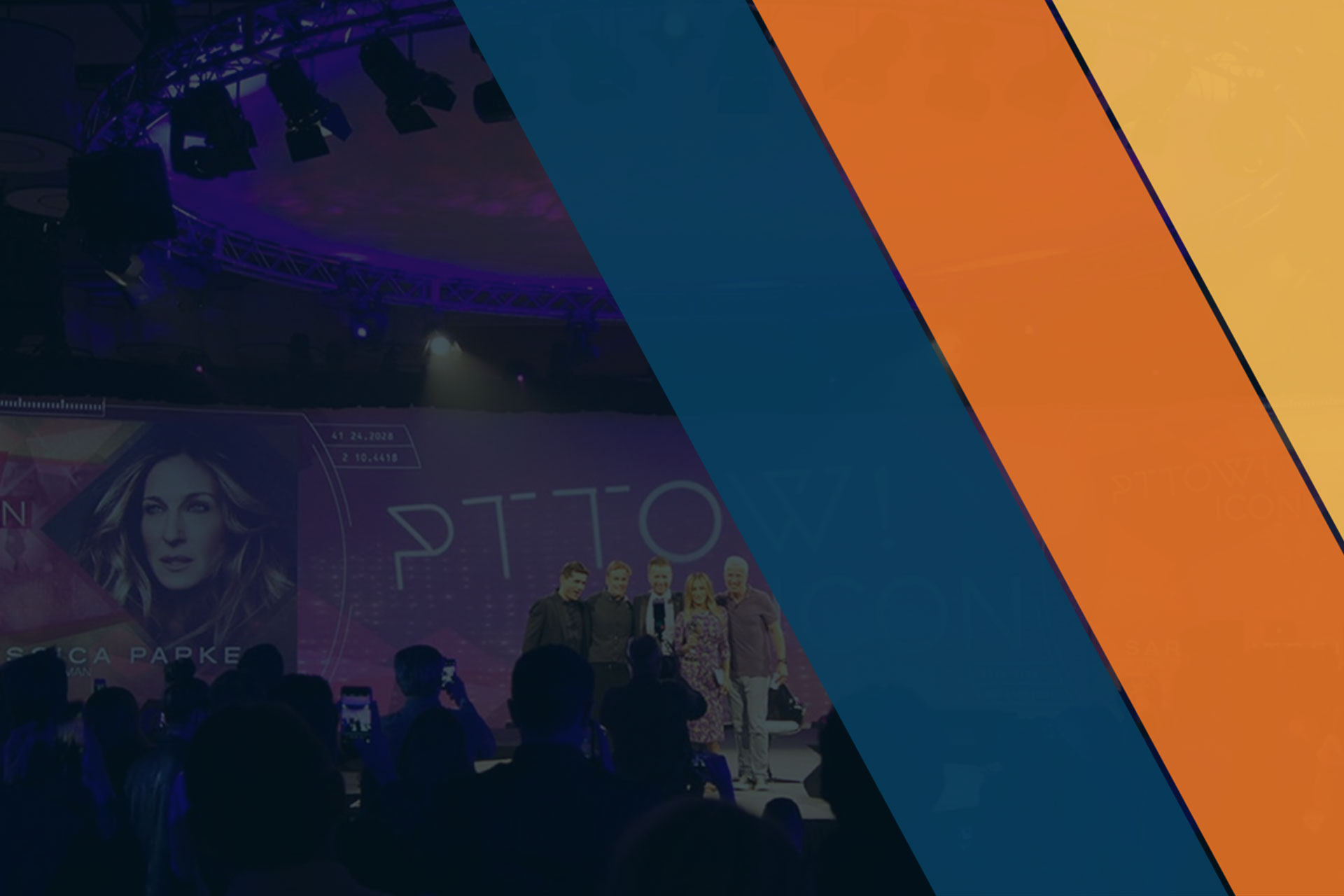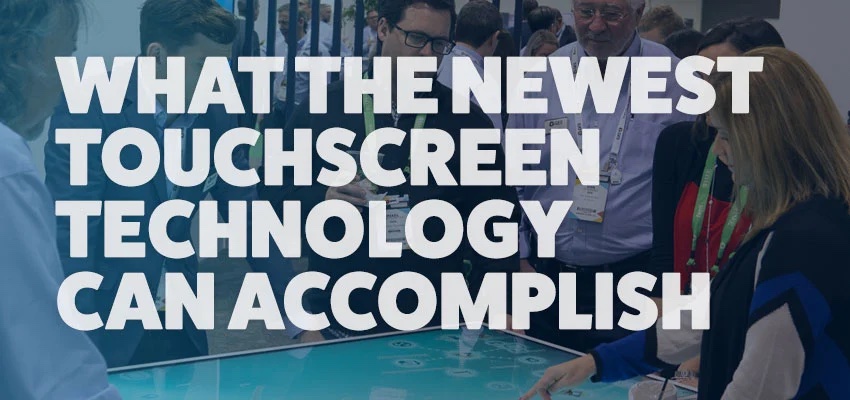

A Guide to Touchscreen Technology for Events

Touchscreen technology has gone from frontier to commonplace. Creating customizable experiences for event goers has become more achievable and is almost expected from attendees. Despite the increased accessibility, touchscreen technology can still be a unique and compelling feature at your next event.
Here is an overview of what the newest touchscreen technology can accomplish and some inspirational uses:
Overview of Touchscreen Technology
Touchscreen technology can be separated into two categories: 1) Capacitive touch, which is found in smartphones and computers, can only be touched with a finger, and will not respond to touches with a regular stylus, gloves or most other objects.
Newer touchscreens use 2) optical technology that is integrated into special display systems where infrared light shoots through a display panel and detects reflections. Depending on what the intensity of the reflected light is, the system can identify the object that is touching it, whether it’s a human hand or an inanimate object. If you are looking to create an interactive experience with touchscreens, you should use a vendor who uses optical technology.
Using More than Fingertips on Touchscreens
MultiTaction (a vendor of touchscreen technology), installed a table at Trinity University where they used 2D barcodes to recognize objects that are placed on the display, including a series of 25 personality cards that interact with the MultiTaction table. The user places the cards on the display and was presented with a series of prompts that they tapped into to learn more information about potential fields of study at the university.
Take a look in the video below:
Measuring Touchscreen Interactions
While using touchscreen technology is entertaining, this information would be essentially worthless if you didn’t have an intelligent way to track and analyze user behavior and engagement. With the latest touchscreen technology, the operator can track each and every movement on a custom backend data system, including where people are touching and how they’re engaging with the on-screen content. This capability gives insight into how the displays are being used in real-time and how effective the tables were in meeting your objective.
How is Touchscreen Technology Used Today?
These interactive displays can be used in a wide variety of applications. They are especially useful are at trade shows, where exhibitors want to measure what content event attendees are interested in. They are also applicable for retail store owners who want to determine which items are getting the most attention from shoppers. Even educators can monitor how students are interacting with the display content. But that’s not all.
In collaborative working settings, a touchscreen table can be used to aggregate daily work, improving efficiency and record keeping, or as a point-of-contact in reception areas. The added functionality of augmented reality (AR) presents the users with added benefits, including digital whiteboard solutions and object recognition, making it a must-have for many commercial settings.
What are the drawbacks?
There’s no doubt that the technology behind these touchscreen features is impressive, but it is by no means flawless. There are three main drawbacks to touchscreen displays that you need to be aware of while the technology is in its early stages.
Think a touchscreen display will be perfect for your next event? See some examples of how it can be used - or contact our experts at ON Services to learn more.

